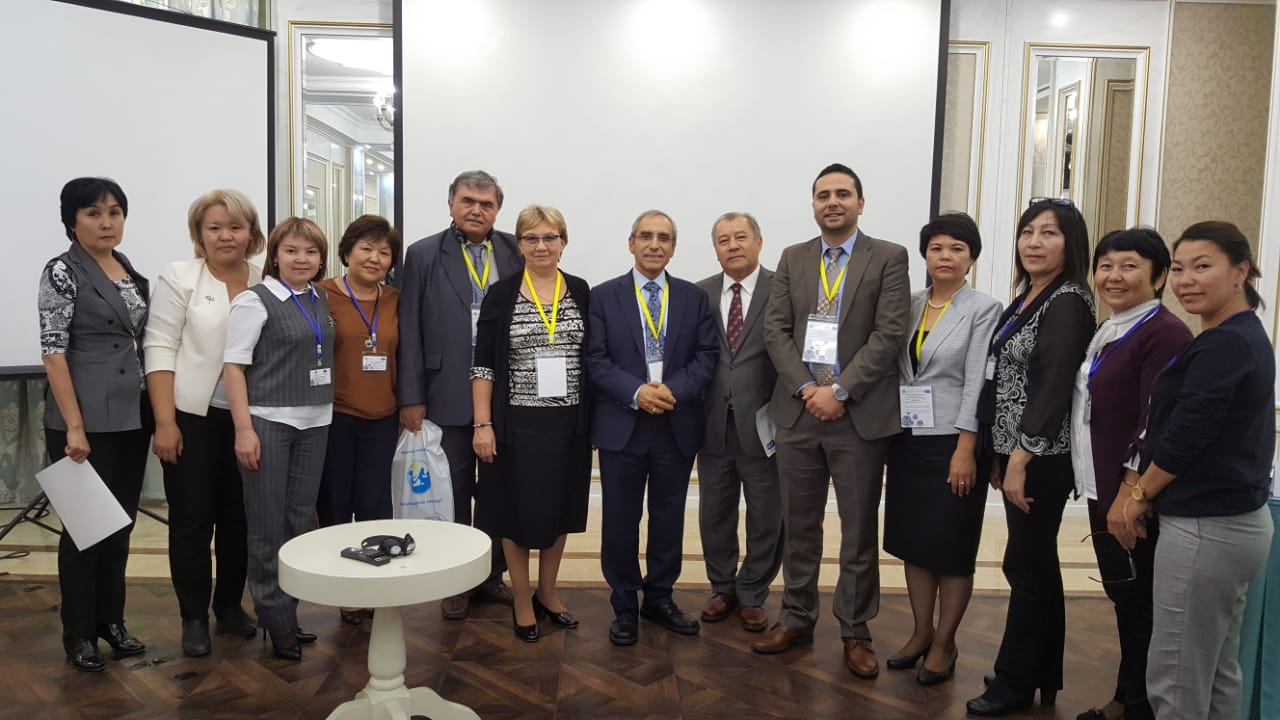

Order a call
 17.09.2018
17.09.2018
Astana hosted an international conference dedicated to the 10th anniversary of the sentinel epidemiological surveillance system in Kazakhstan on the topic: "Influenza is a public health problem: recognition, prevention and treatment".
The event was attended by the Chairman of the Public Health Protection Committee of the Ministry of Health of the Republic of Kazakhstan, representatives of the SDS / CAR, the National Center for Public Health, territorial Departments of Public Health protection, medical and preventive institutions and specialists of virological laboratories of the RSE at the National Center of Expertise.
In addition, professors and doctors of medical sciences from Lebanon, Russia, Great Britain, Uzbekistan and Kyrgyzstan took part in the conference.
The conference participants discussed the current state of the flu problem, modern technologies for the prevention and treatment of the disease. The situation of acute respiratory viral infections in the CIS countries was also discussed.
In her report, the specialist of the Department of Industrial Activities of the National Center of Expertise Lyazzat Kiyanbekova spoke about the role of laboratory monitoring of the circulation of the influenza virus.
According to Lyazzat Kiyanbekova, the epidemiological surveillance watch system in Kazakhstan was introduced in 2008 in 3 sentinel regions, 9 polyclinics and 8 hospitals, 3 virological laboratories are involved.
In 2012, 4 more sentinel regions were joined - these are East Kazakhstan, Zhambyl, Mangystau regions and Astana with the service of 42 sentinel polyclinics and 35 hospitals. After that, Almaty and the South Kazakhstan region were connected with the service of 15 patrol polyclinics and hospitals.
To date, the DAN system has 9 sentinel regions with 9 regional virological laboratories with the maintenance of 57 sentinel sites (30 polyclinics, 27 hospitals).
Virology laboratories assist in the process of selecting a global vaccine strain, including the identification of viruses associated with severe forms of the disease.
Along with this, mutations or genetic reassortment of the influenza virus are being monitored, which may affect the effectiveness of the vaccine strain, the virulence of the virus or its sensitivity to antiviral drugs.
Also, according to the results of laboratory studies, the beginning of the influenza epidemic season is determined for the organization of preventive and anti-epidemic measures, including assistance in treatment.
For example, since 2011, there has been an improvement in the laboratory diagnosis of influenza from 88% to 100% over the past two years.
Over the past 10 years, it has been established that in the 2008-2009 epidseason, three types of influenza virus circulated among patients with influenza–like diseases (HPV) and severe acute respiratory viral infections (TORI) - influenza B, influenza A(H3N2) and influenza A (H1N1).
In the 2009-2010 epidseason, the cause of influenza was two viruses, influenza type B and with the dominance of type A (H1N1) pandemic virus.
In subsequent epidseasons, three types of influenza B, H3, and H1 pandemic viruses served as the etiological agent of influenza morbidity.
In the 2014/15-2016/17 epidseasons, only two types of influenza virus – influenza virus type B and type A (H3N2) - circulated among patients with GPZ and TORI.
Every year, for confirmation, positive samples for influenza are sent to the laboratory in Atlanta, USA. So, since 2014, 144 samples have been sent, which are 100% confirmed.